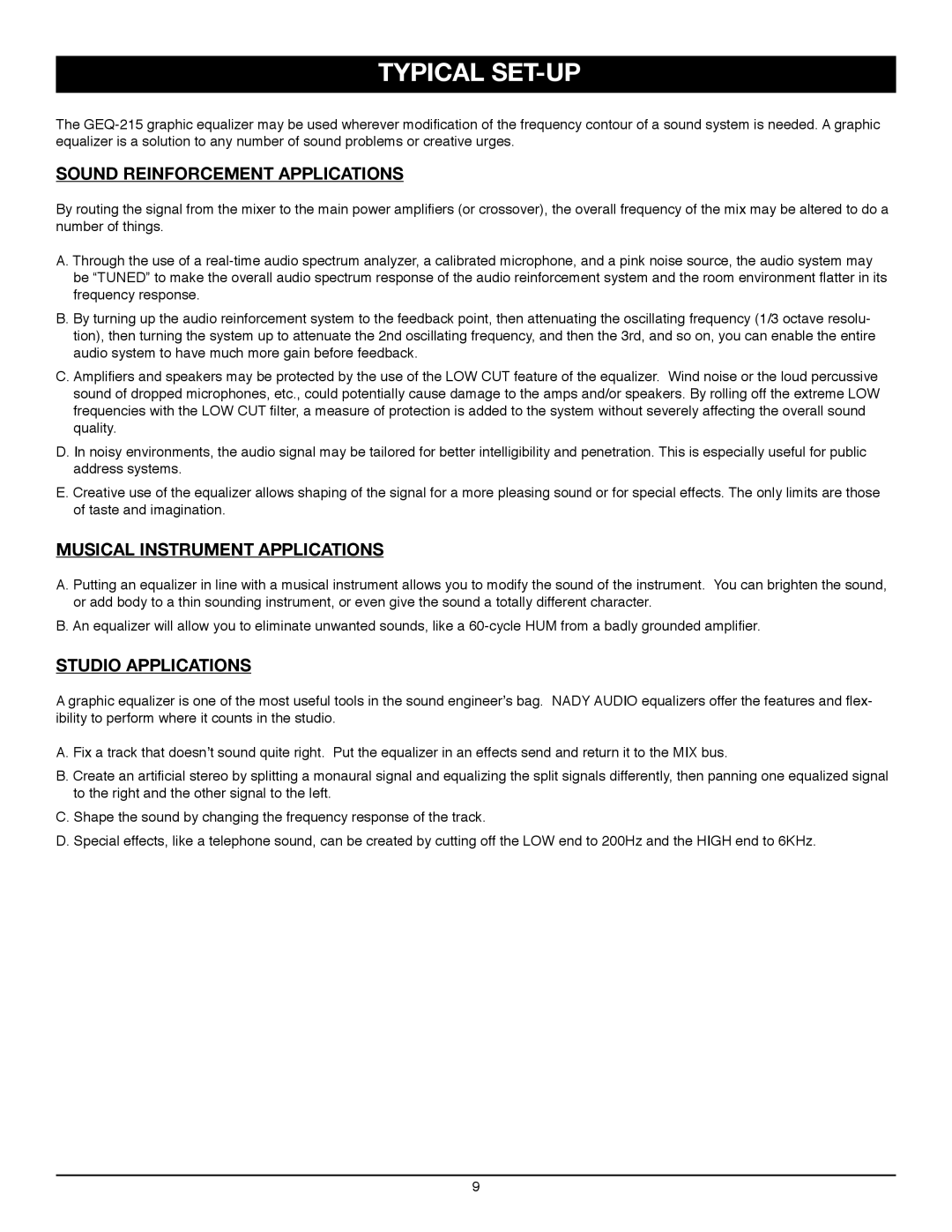GEQ 215 specifications
The Nady Systems GEQ 215 is a powerful graphical equalizer designed to enhance the sound quality and performance of audio systems. Renowned for its versatile application in live sound reinforcement, broadcasting, and studio recordings, the GEQ 215 exhibits robust features that make it essential for audio professionals and enthusiasts alike.One of the core features of the GEQ 215 is its 15-band equalization, which allows users to tailor the frequency response of their audio signals with precision. Each band offers a range of ±12 dB of gain adjustment, empowering users to effectively boost or cut specific frequency bands. This level of control is vital for addressing common audio issues such as feedback, resonance, and tonal imbalances, ensuring that every sound source in the mix shines through clearly.
The GEQ 215 utilizes a 1/3-octave frequency center spacing, allowing for fine-tuned adjustments across the audible spectrum, from 20 Hz to 20 kHz. This wide range ensures that both low-end and high-end frequencies can be manipulated effectively, making it suitable for various applications, including musical performances, corporate events, and public speaking engagements.
Another standout feature of the GEQ 215 is its user-friendly interface. The front panel is equipped with backlit sliders that provide clear visual feedback, making it easy to identify settings even in low-light environments. Additionally, the unit has a bypass switch, allowing users to compare the processed and unprocessed audio signal quickly, which is essential for making informed adjustments during live performances or studio sessions.
The GEQ 215 also boasts high-quality components and construction aimed at ensuring reliability and durability. Balanced XLR and 1/4" TRS inputs and outputs allow for seamless integration into various audio setups, minimizing noise and maximizing signal integrity. Its rugged metal chassis is designed to withstand the rigors of both touring and permanent installation, making it a reliable choice for any sound engineer.
Furthermore, the device incorporates advanced technologies that enhance its performance. With a low-frequency response that features a high-pass filter, the GEQ 215 can effectively reduce rumble and unwanted low-frequency noise. It also includes LED level metering for each band, allowing users to monitor signal levels visually, preventing distortion and overload.
Overall, the Nady Systems GEQ 215 stands out as a high-performance equalizer that combines superior sound quality, user-friendly operation, and robust construction. With its comprehensive features, it remains an invaluable tool for achieving optimal sound in any audio environment. Whether for a live concert or a recording session, the GEQ 215 is equipped to deliver outstanding results.

